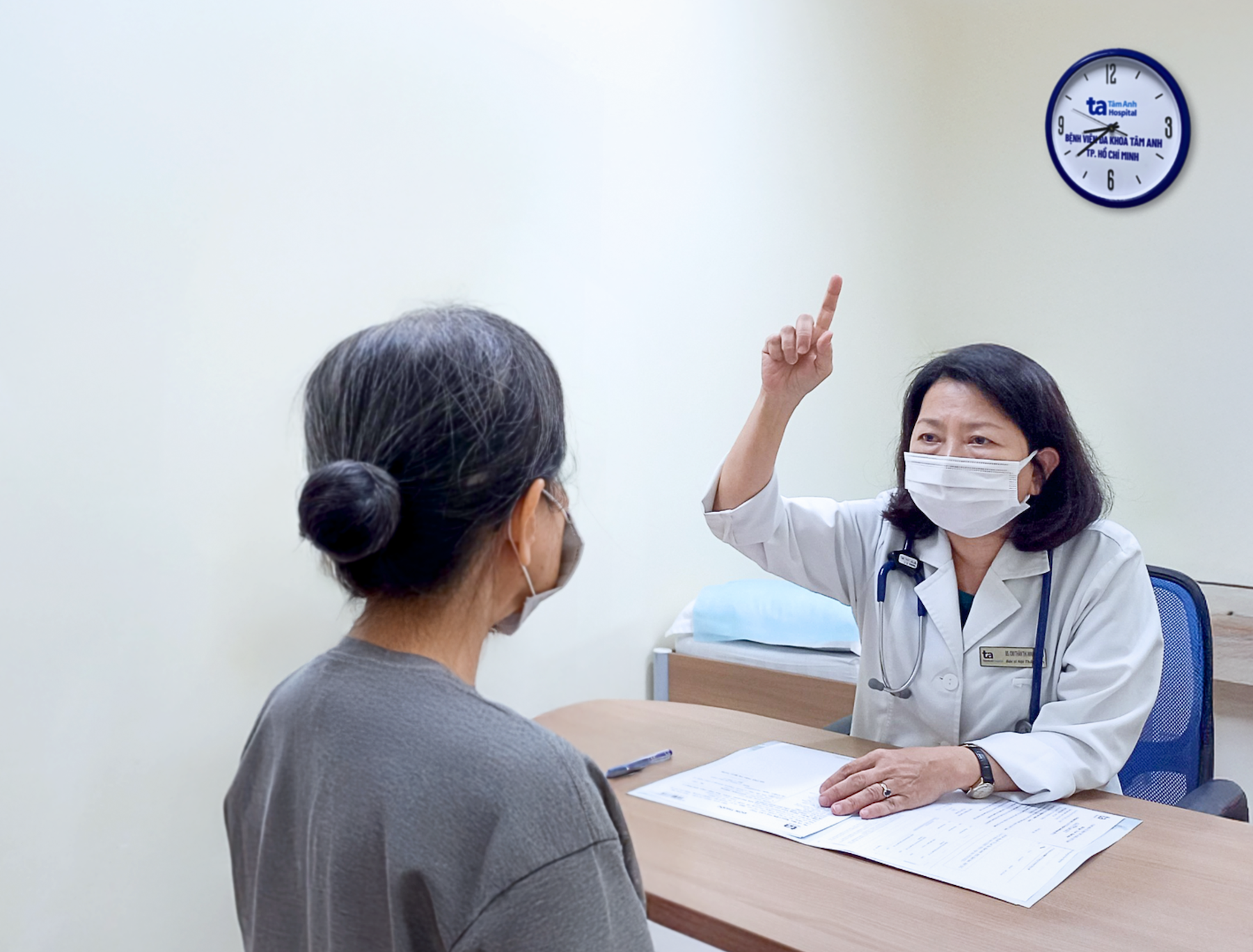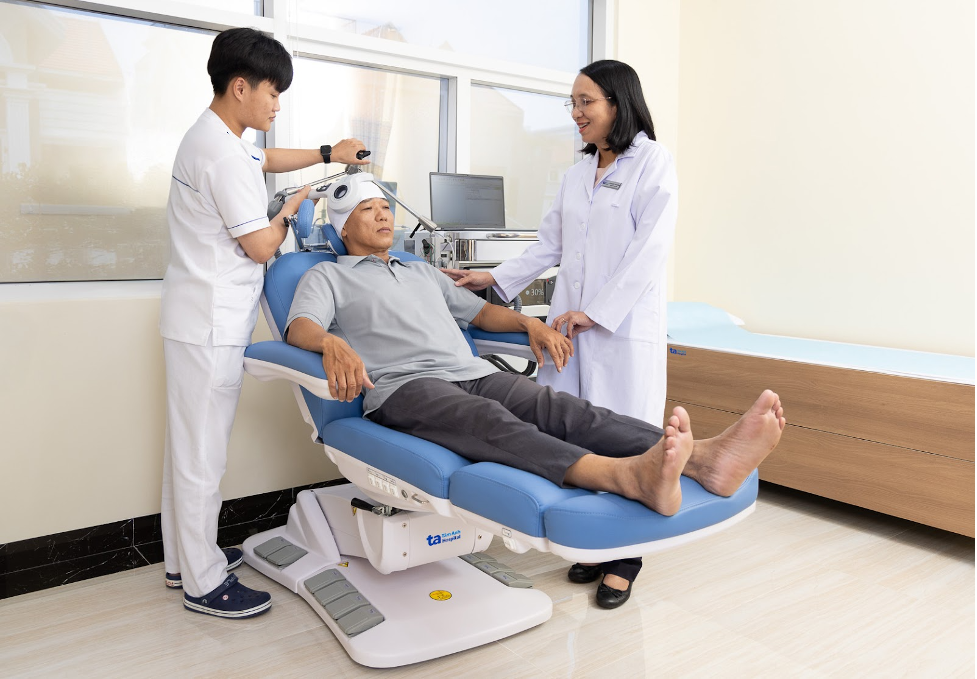Doctor Nguyen Phuong Trang, head of the Transcranial Magnetic Stimulation unit at the Neuroscience Center of Tam Anh General Hospital in TP HCM, explains that early-onset dementia is a common after-effect of stroke. It impairs memory, thinking abilities, and daily living skills, while also increasing the risk of depression, anxiety, and loss of motivation for rehabilitation exercises. This occurs because a stroke can damage the areas of the brain responsible for memory, language, or behavior control. Patients may lose the ability to retain new information, have difficulty concentrating, and experience slower processing of situations.
According to Dr. Trang, there are two main mechanisms that lead to post-stroke dementia. First, direct damage from cerebral infarction or cerebral hemorrhage destroys nerve tissue in the frontal or temporal lobes – the control centers for memory and thinking.
Second, indirect damage from a stroke disrupts connections between brain regions, reduces chronic cerebral blood flow, promotes neurodegeneration, and leads to the formation of recurrent small infarcts, gradually causing cognitive decline. Specifically, in patients with cerebral hemorrhage, the mechanical pressure from the blood clot and the inflammatory and toxic reactions arising during blood cell breakdown can lead to cerebral edema, expanding the area of necrosis.
Factors like high blood pressure, diabetes, dyslipidemia, and atrial fibrillation increase the risk of stroke and accelerate the cognitive decline process afterward. Older individuals, those who have experienced transient ischemic attacks, or those with underlying cardiovascular diseases are generally more susceptible to this condition.
Take, for example, the case of Lan, 59, who suffered a hemorrhagic stroke a year ago and received timely treatment. Recently, her family noticed that she often misnamed her grandchildren and got lost even in familiar neighborhoods. An examination at the Neurology Department of Tam Anh General Hospital in TP HCM revealed that she had moderate vascular dementia due to extensive brain damage after the hemorrhage, combined with uncontrolled hypertension.
 |
A doctor assesses neurological recovery for a post-stroke patient. Photo: Tam Anh General Hospital |
A doctor assesses neurological recovery for a post-stroke patient. Photo: Tam Anh General Hospital
Similarly, Hung, 68, suffered a small-vessel ischemic stroke in the left frontal lobe, along with several old infarcts in the subcortical region. After medical and rehabilitation treatment, his motor skills improved, but his short-term memory declined. He has become forgetful, struggles to retain new information, and often requires assistance with daily activities.
Currently, both Hung and Lan are receiving treatment with medication to improve cerebral circulation, memory rehabilitation exercises, speech therapy, and transcranial magnetic stimulation (TMS) to activate healthy brain regions and improve cognitive function.
Along with motor rehabilitation, Dr. Trang recommends that stroke patients participate in cognitive rehabilitation programs from the beginning or when unusual signs appear. These programs include memory training, language training, and problem-solving skill development. The optimal recovery period usually begins 24 hours after the stroke, once vital signs have stabilized, and extends to around the third month. This process requires a combination of methods for optimal effectiveness.
Post-stroke patients need regular check-ups to monitor vascular risk factors like blood pressure, blood sugar, and blood lipids to slow the progression of cognitive decline and vascular dementia, and adhere to post-stroke prevention protocols. Regular follow-up visits, especially in the first 6-12 months, help detect cognitive disorders early and allow for timely intervention. If there are signs of unusual forgetfulness, personality changes, decreased planning ability, or disorientation, families should take the patient for an early examination.
Current diagnostic techniques help doctors comprehensively assess the condition of blood vessels and brain damage, enabling them to develop personalized treatment plans. Some common treatment methods include transcranial magnetic stimulation and cognitive rehabilitation exercises such as memory training, language training, and problem-solving skill development.
 |
Transcranial magnetic stimulation helps improve nervous system activity after a stroke. Illustration: Tam Anh General Hospital |
Transcranial magnetic stimulation helps improve nervous system activity after a stroke. Illustration: Tam Anh General Hospital
Patients should maintain a healthy diet rich in green vegetables, fish, and nuts, while limiting salt, sugar, and saturated fats. Light daily exercise and participation in social activities, reading, playing music, and regular conversation also help stimulate and maintain brain activity.
Phuong Thy
*Patient names have been changed.
| Readers can submit questions about endocrine diseases here for doctors to answer. |












